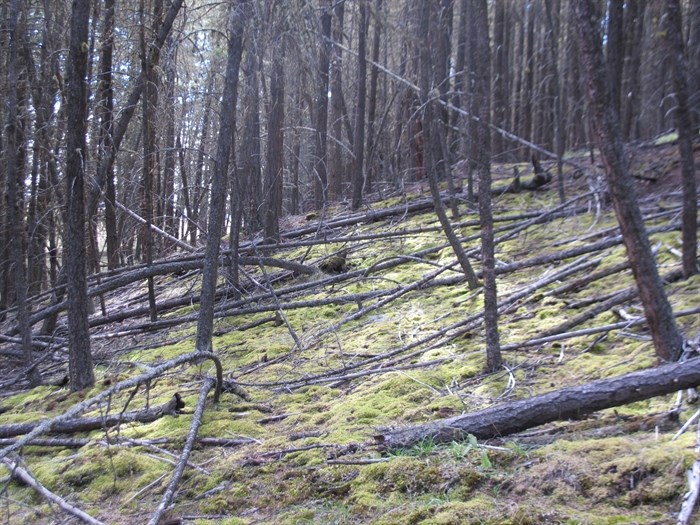
The mountain pine beetle has moved out of the Southern Interior, but communities are only now beginning to experience the serious impacts of the devastation it left behind.
(JENNIFER STAHN / iNFOnews.ca)
June 04, 2015 - 4:29 PM
WILDFIRES, JOB LOSSES, JEOPARDIZED WATERSHEDS
THOMPSON-OKANAGAN - For the most part the small, yet devastating, mountain pine beetle has disappeared from the landscape of the Southern Interior, but the aftermath of its work will be felt for many years to come.
The mountain pine beetle epidemic that crawled into B.C. in 2000 is recognized as an unprecedented forest-altering event, the worst bark beetle infestation ever recorded in North America.
Historically winter conditions have temperatures drop to at least -35 Celsius for about week, which kills off most of the beetle population in the Interior, but that kind of weather hasn’t been seen since the winter of 1995-96. In the first few years, the province’s response focused on limiting the spread by raising the allowable annual logging cut and destroying infested timber stands before the beetles could fly to new trees. That was yesterday’s fight.
Rhona Martin chairs the Southern Interior Beetle Action Coalition, and she says the beetle disappeared from the region about a year and a half ago. While that brought some good news, it also marked the beginning of a new phase in the fight.
“What we’re dealing with now is the results of what the pine beetle has done,” she says. “The aftermath is the hardest part.”
Environmental impacts are just the start. Forested areas turned barren due to the infestation run the risk of land slippages and flooding because there’s less roots and vegetation retaining water. Watersheds could be adversely affected.
“It changes everything. If you have a healthy hillside with trees, the roots are holding soil in place, it helps retain water when it rains, then all of a sudden that’s gone. Everything moves differently,” Martin says.
Meanwhile, areas with a build-up of dead pine trees increase the risk of a severe wildfire due to the huge fuel load.
The province has now lowered the total allowable annual cut, and that’s going to have an impact on the logging industry. Martin says a reduced timber supply could have a ripple effect on the cost of fibre, making it too expensive for some businesses to buy.
The forest sector isn’t the only industry bracing for impacts. Deteriorated landscapes could mean tourism takes a hit, while access to water and wood debris might mean impacts to the ranching and agriculture sectors as well.
The whole province will feel the effects of the mountain pine beetle epidemic, but certain communities may be hit harder than others due to large economic reliance on the forest industry. Some areas believed to be at a higher risk of future negative impacts include Lumby, Princeton, Lytton, Merritt and Clearwater, among others.
The beetle coalition launched a number of projects to help communities cope with the aftermath of the epidemic. Initiatives have included using mountain pine beetle fibre waste in bioenergy facilities and running tourism and water management workshops in various regions. The coalition also released a report with numerous recommendations to mitigate the impacts of the pine beetle infestation. You can read more about their work here.
Martin says every community has its own challenges, and will need to think creatively to confront the effects of the pine beetle infestation.
“We have huge areas of our region that are struggling. Everybody is struggling. We just want to make sure we can try and prepare people for the impacts,” Martin says.
To contact the reporter for this story, email Charlotte Helston at chelston@infonews.ca or call 250-309-5230. To contact the editor, email mjones@infonews.ca or call 250-718-2724.
News from © iNFOnews, 2015